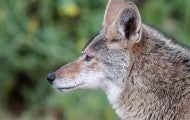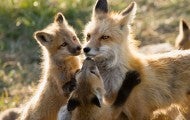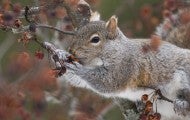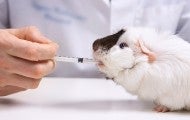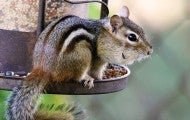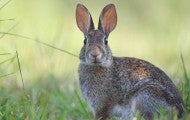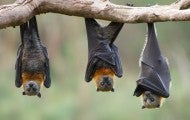If you spot a coyote in your neighborhood, relax: Most coyotes avoid people. “Seeing a coyote out during the day is not a cause for alarm, especially in the spring and summer when they’re out looking for food for their pups,” says Lynsey White, HSUS director of humane wildlife conflict resolution...
Foxes are omnivores, hunting very small animals and scavenging in cities and towns where freely available pet food and garbage can make life easier. It’s not unusual for a fox to be seen out and about during the day. Learn More About Foxes Foxes are afraid of people and will usually run away when...
Every day, more and more wildlife habitat is lost to the spread of development. Give a little back by building your own humane backyard! It doesn't matter whether you have a small apartment balcony, a townhouse with a sliver of ground, a suburban yard, a sprawling corporate property or a community...
Contents How many animals are used in experiments each year? Which animals are used in experiments? What kinds of experiments are animals used in? What kinds of institutions use animals in experiments? Where do laboratories get the animals they use in experiments? What is life like for animals in...
Contents How many dogs are used in experiments every year? What kinds of experiments are dogs used in? What kinds of institutions use dogs in experiments? Which laboratories in the U.S. have the largest number of dogs in their possession? Where do laboratories get the dogs they use in experiments...
Rabbits can make great pets, but they require a gentle touch, good knowledge of proper care and plenty of attention. Here’s what to consider before adopting a rabbit. Are you in it for the long haul? Healthy rabbits can live for more than 10 years, so a rabbit may be with your family for as long as...
Are animal experiments being conducted in your city/state or at your university or alma mater? Use the U.S. Department of Agriculture (USDA)’s public search tool to find out! The Animal Welfare Act requires facilities in the U.S. that conduct experiments* on certain animals** to register with the...
Once robust, populations of cougars (also known as mountain lions or pumas) have declined drastically across most of their range in the Americas. The population decline is due to the impact of extensive hunting and predator control, in addition to continued habitat loss and fragmentation. Cougars...
There are several species of wild rabbits—most are Eastern cottontail rabbits—who live across most of North America. Cottontails like to live at the edges of open areas. In fact, they are rarely found in dense forests or open grassland. Learn More About Rabbits Contents Why are there so many rabbits...
This list is provided as a resource for horse owners and is for informational purposes only. Please contact specific vendors for more information on their services. Every effort has been made to ensure the accuracy of all listings. This list is not exhaustive and is subject to change over time. The...
